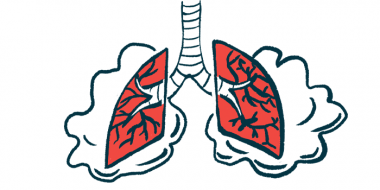Physical therapy can help SMA patients increase lung capacity
Deep breathing exercises show benefits for patients with spinal muscular atrophy

Michael, a patient who has spinal muscular atrophy (SMA), has experienced reductions and increases in his lung capacity throughout his life due to his genetic disorder. This is a common occurrence in this population due to the disease’s progression on the muscles responsible for respiration. Just recently, this population is being recommended for physical therapy, so we are now beginning to see the advances someone with SMA can make in their breathing functions and lung capacities while attending physical therapy.
Each person who has been diagnosed with SMA presents differently and has a variety of strengths and weaknesses. Improving breathing and increasing lung capacity will be a common goal to ensure proper oxygen exchange as well as ensure the ability to cough up mucus in the event of respiratory issues.
There are many different approaches to reaching this goal, although this will depend on the function of the patient. Michael has been able to improve his lung capacity by working on specific breathing exercises as well as improving mobility and range of motion.
Some activities are as simple as performing deep breathing exercises: inhaling through the nose and exhaling through the mouth, slowly. This can be performed three times a day for 10 minutes with a timer set to ensure the patient can focus on breathing and not worry about counting.
Another activity is diaphragmatic breathing, which can be performed while sitting or lying supine, or on your back. This is performed by focusing on expanding through the stomach while inhaling and relaxing as you exhale. Performing breathing exercises with different lip formations, such as pursed lips, can help to recruit different respiratory muscles and increase the ability to perform deep breathing.
Range of motion activities can help to improve lung capacity by increasing the available range the lungs can expand to. For Michael, we performed these exercises by having him sit in his wheelchair or on the edge of the table, and have him lean as far as he can in different directions and then contract his abdomen to return to a neutral position. During these movements, he is instructed to inhale and exhale deeply to encourage the recruitment of respiratory musculature and increase lung capacity.
Depending on the patient’s available range of motion as well as functional capabilities, there are many different activities that can be performed to improve and increase lung capacity. Get creative and use different positions that are comfortable and functional for the patient to encourage compliance outside of the physical therapy clinic.
Patient perspective
When my parents learned that I had a progressive neuromuscular disease, they were extremely interested in getting me involved in different phases of physical therapy. When I was 3 years old, my mother found a day care center that had an indoor swimming pool. After speaking with the owner, she allowed my mother to come in every Monday, Wednesday, and Friday so she could work with me in the pool.
After many of the parents learned that my mother was doing physical therapy with me, the owner of the day care set up swimming lessons. My mother received her Water Safety Instructor certification and she began giving swimming lessons to some of the other children in the day care.
Not long after this, my parents decided to build a pool in our backyard, and for the next 22 years, my mother taught swimming to thousands of children. The water was heated to 92 F, and even though my mother only taught swimming from June until August, we would keep the water heated through the beginning of November so I could continue to swim on a daily basis.
Learning to swim at an early age was probably one of the most beneficial aspects of my overall physical therapy. Deep breathing exercises, and competitions with my mother to see who could hold their breath the longest may have been a game for me, but little did I know how much this would benefit me as I got older. I’ll soon be 58, and I recently set my all-time record of holding my breath for nearly 3.5 minutes.
Before attempting to hold my breath for that amount of time, I usually take five or 10 deep breaths to make sure my lungs are fully oxygenated. These deep breathing and breath holding exercises have allowed me to recover quicker when I have an upper respiratory infection, and I continue to see benefits of doing these exercises on a day-to-day basis.




